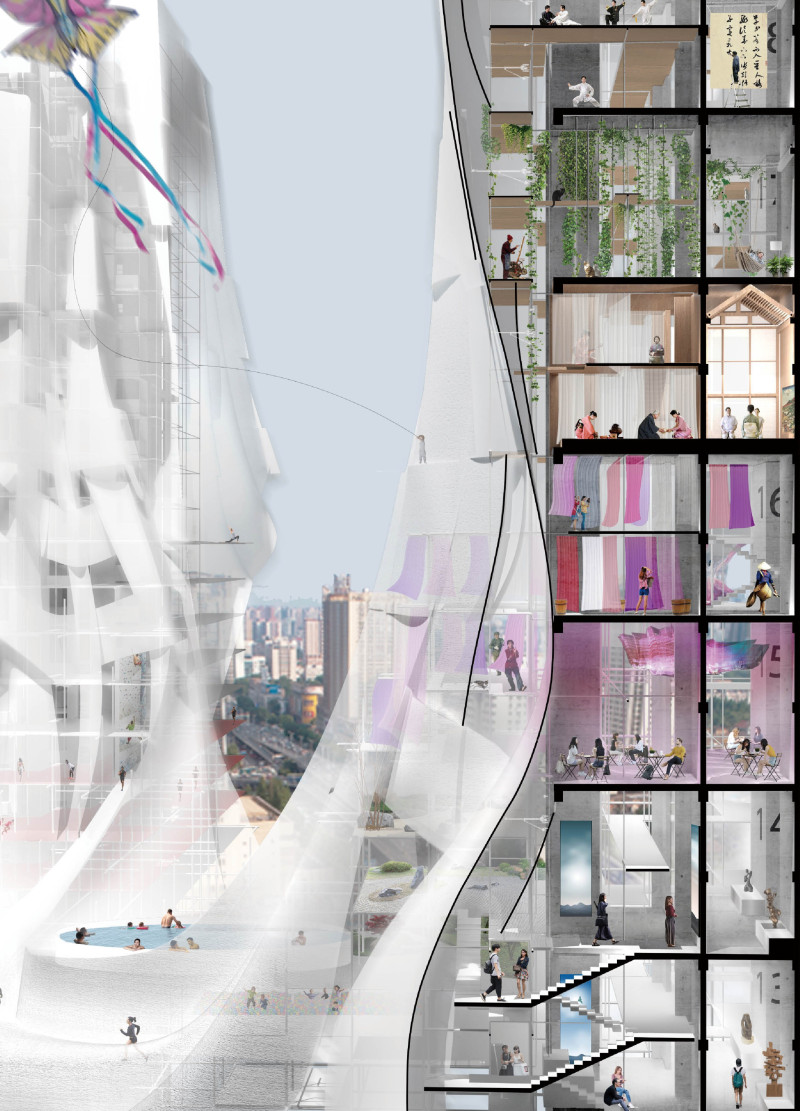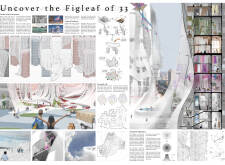5 key facts about this project
The design revolves around the transformation of 33-story residential towers in China. These towers were built during a period of rapid urban growth but now stand mostly abandoned and poorly managed. Initiated in 1978, their construction aimed to address housing shortages but resulted in a mismatch with the demands of modern living. The goal is to address these shortcomings while reconnecting with the community and fostering a sense of identity in urban spaces.
Design Concept
The design seeks to breathe new life into these underused towers through innovative methods. A key approach involves wrapping the structures in a large, intricate cloth that softens their imposing facades. This treatment creates a conversation between the buildings' historic significance and their contemporary role. The intention is to turn neglected spaces into lively environments where residents can feel a genuine connection to their surroundings.
Spatial Reconfiguration
A distinctive feature of the design is the removal of every other floor within the towers. This decision results in double-height spaces that change how inhabitants interact with their environment. The internal layout is simplified into two main categories: private living spaces and flexible communal areas. Such a configuration encourages social interaction and provides options for various uses, addressing the challenge of creating diverse living experiences within a dense urban setting.
Material Utilization
Material choices significantly influence the overall design. The project prominently uses fabric because of its adaptability and lightness, in contrast to conventional building materials. This fabric not only enhances the visual appeal of the towers but also allows for a more responsive architectural framework. The use of fabric creates opportunities for interaction, reflecting the changing dynamics of urban life while promoting engagement among residents.
Structural Integration
The structural support for the fabric involves an advanced system of anchoring. Steel ropes provide tension while mechanical extension rods ensure stability. This combination allows the cloth to cover the towers effectively while accommodating movement. The engineering details reinforce the design, creating a system that is both sturdy and flexible.
The result is a new identity for the towers, where the fabric creates a lively and inviting presence in the urban landscape. Each aspect is designed to invite residents to engage with their surroundings in meaningful ways.



















































